Aspartame | 2016/17
Danish Cultural Center Project
Beijing, China
December 17, 2016 - February 19, 2017 ACKNOWLEDGMENTS Galerie Urs Meile Hahnemühle GmbH Mayer' she Hofkunstanstalt GmbH Photo One Studio Turtle Pro Video Production Related Readings: Jörg Scheller, "Introductory Remarks to Yingji Yang's Exhibition Aspartame"article(en) Thomas Girst, "Circumscribing the Void." 2017. article(en) ©️Photo credit: Yingji Yang Studio and Xiaoyu Liu Text: Yingji Yang

Materials: sugar, lead, wood
My grandma has diabetes. When I was very young, I saw her lock many sweets in a drawer like treasures. Every time she ate sweets, is was like a ritual. Those sweets were mysterious and uneasy to me. As time goes by, candy can be found easily in daily life. It is no longer mysterious, but the inner anxiety and temptation extend to the spiritual level, which is beautiful and dangerous. It's a source of disease and a sweet blood sugar "pill".
It is like her, or him, or everyone. The dangers, temptations, joys, and unease in our bodies are sometimes colourful and sometimes fragmented. Hear the screams of danger in a sweet carnival.
This exhibition was hosted by Danish Cultural Center. The show including the "He/She", "Black Persimmon", "Aspartame Video" series. Open to the street, four sugar installations were torn down to the ground; air, seeds, little feathers, thoughts mixed with dust was swept on the sugar's skin by the wind. First historical reference of sugar comes from China, with the mentions of the India’s sugarcane fields in ancient surviving texts. In the 500s Buddhist monks who traveled from India to neighboring countries introduced Sugar to China. In 9th and 10th century it was then when Muslim countries in Middle East and Asia adopted sugar production of India, and enabled European countries to come in contact with this incredible food substance. After 11th-13th centuries, sugar returned to Europe with the Crusaders, when soldiers brought back to Europe mysterious “sweet salt”...Since then launched a lot of trade and colonial culture... Sugar in modern times is the root cause of many diseases, but people can not get rid of it. In the memory of sugar maybe it is both full of fragileness and tartness, like it's historical stories. During the exhibition, the documentary of the entire exhibition production process was showed and an exhibition album was also made available.
At the completion of the project, I take off the candies from the lead frames and collect them to use it in the next project. Just like the superposition of the time form childhood to the present, they are also endowed with the meaning of time.
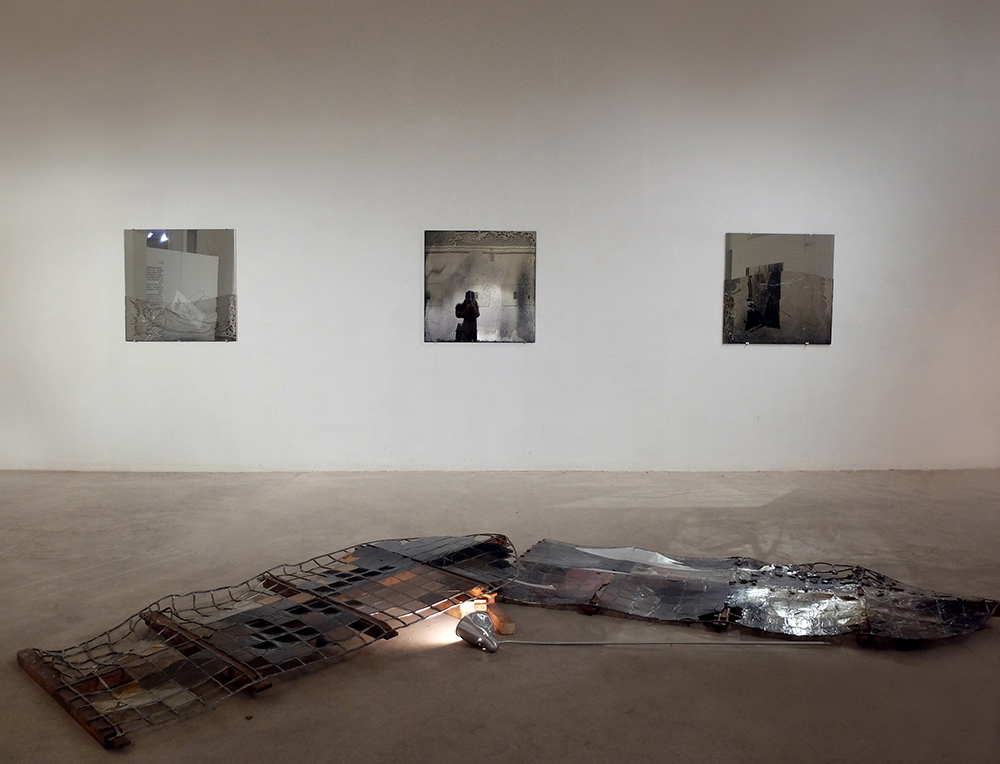
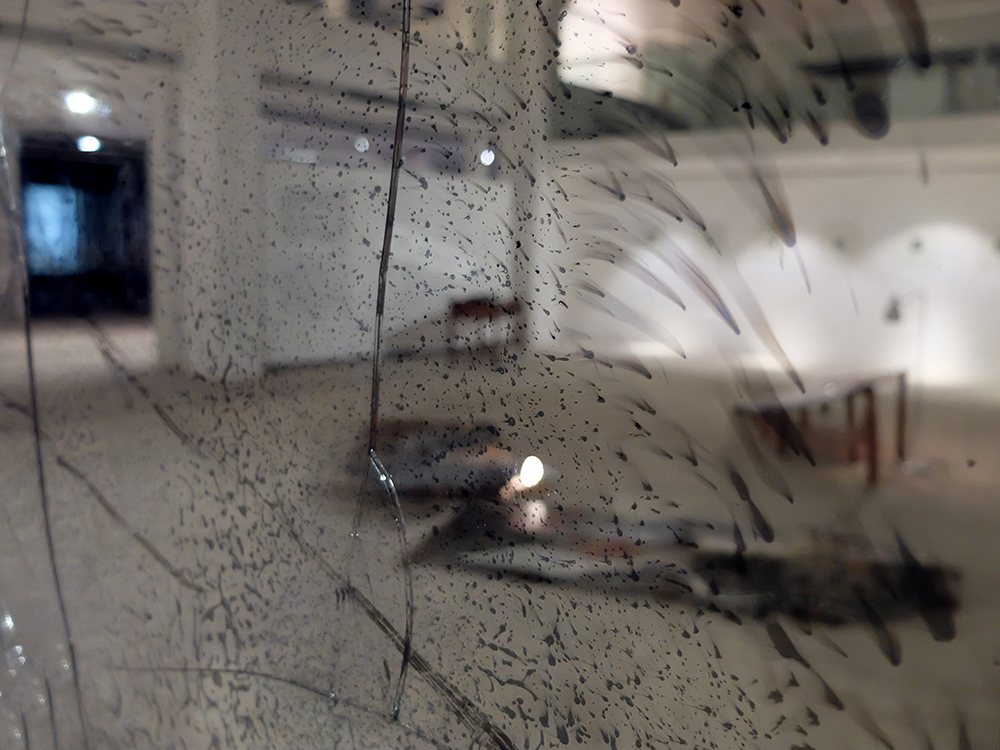
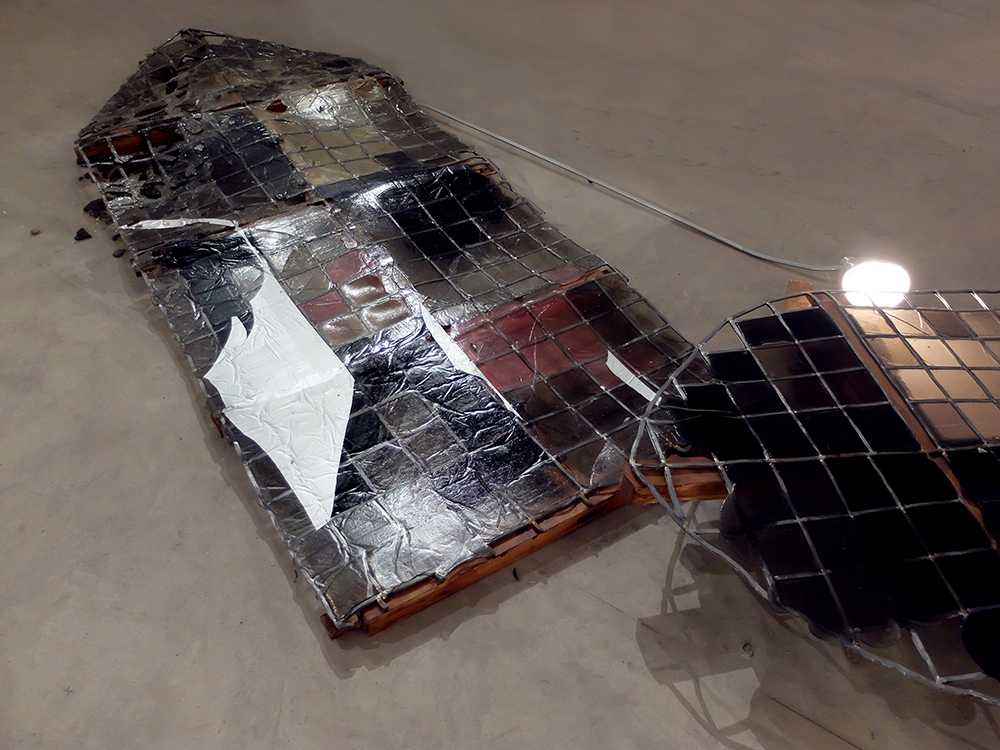

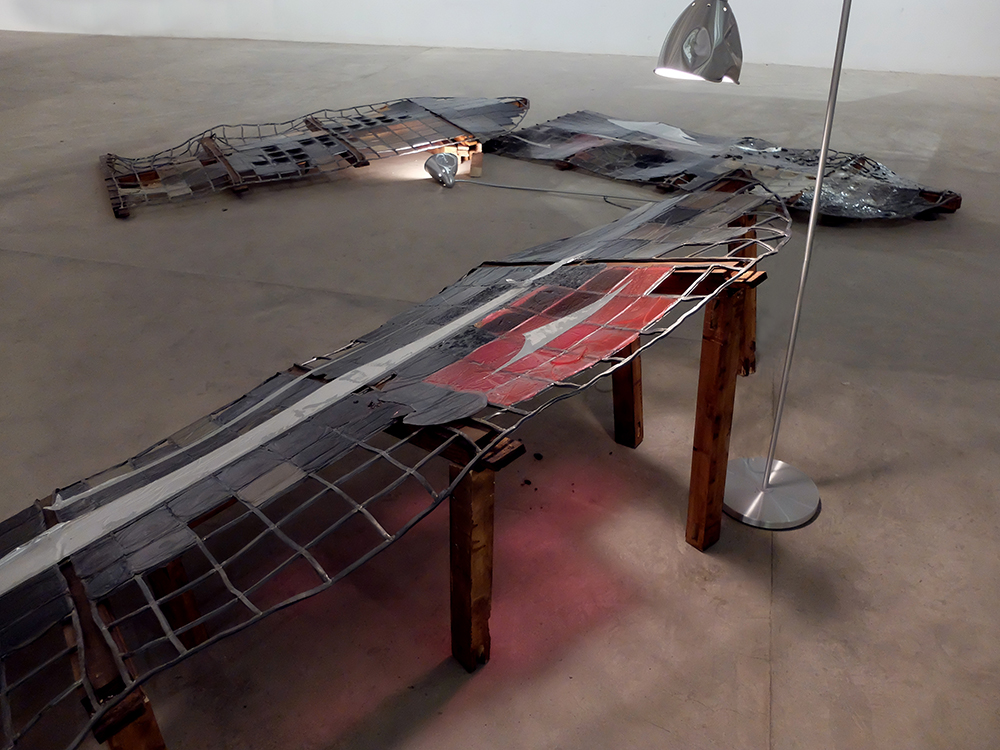

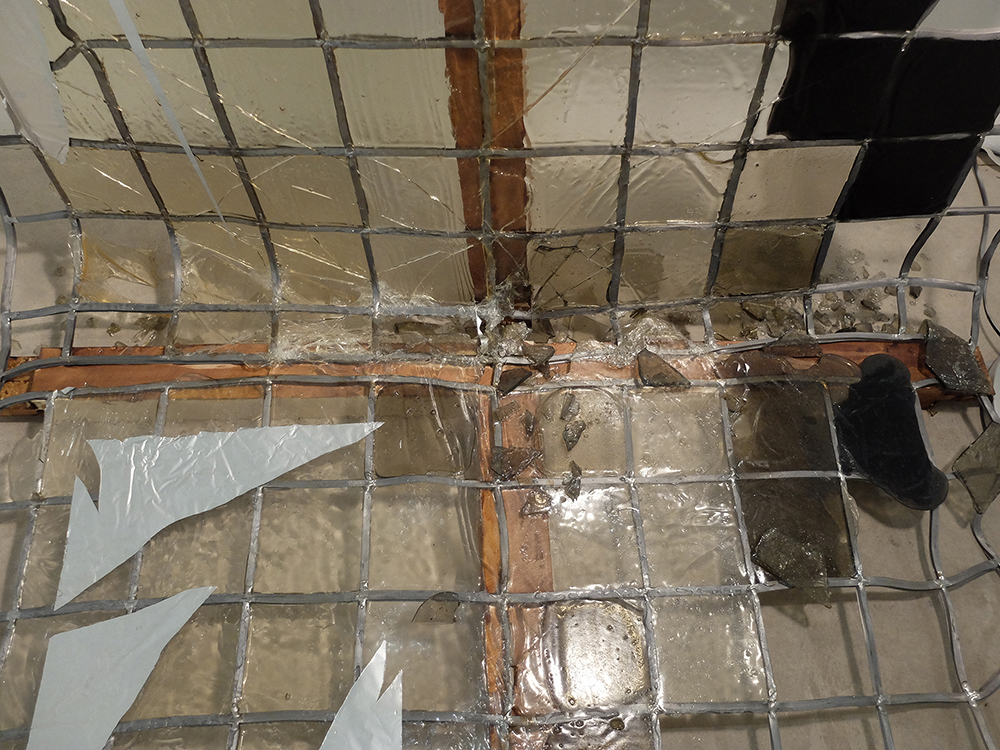
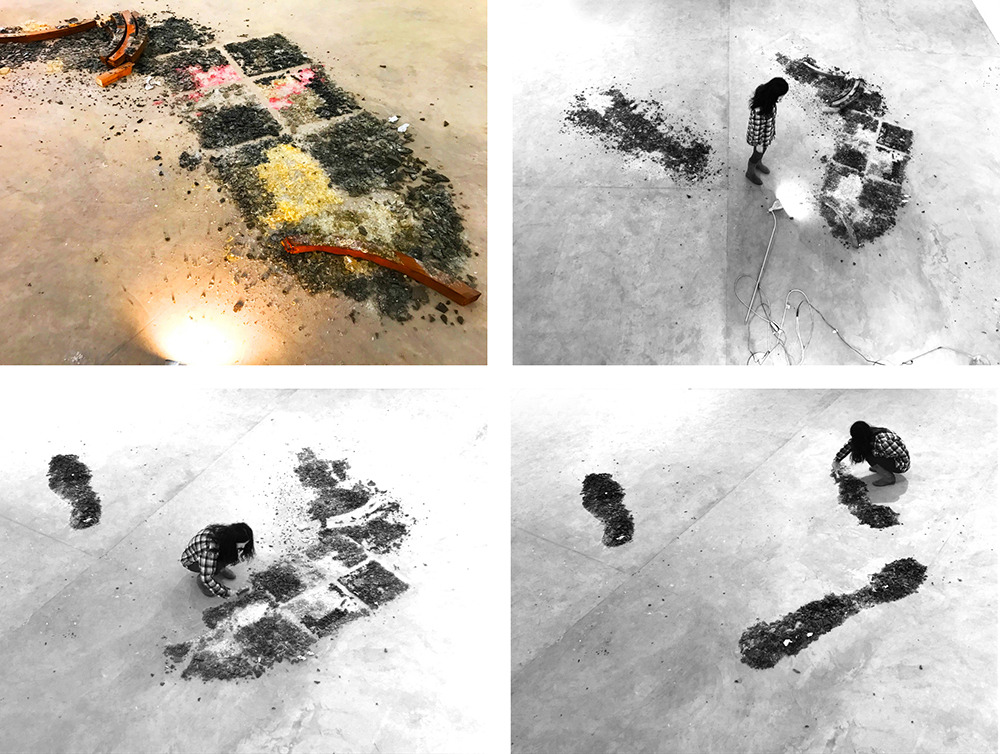
I knocked down the sugar panels from lead strip and collected them.
Aura Art Gallery
(Glasgestaltung und Mosaik)
![]()
“Über die Ausstellung und den Kuenstlerischen Entstehungsprozess”Yingji Yang in dialogue with Joerg Scheller in Goethe institut China(17 December 2016) interview (en)